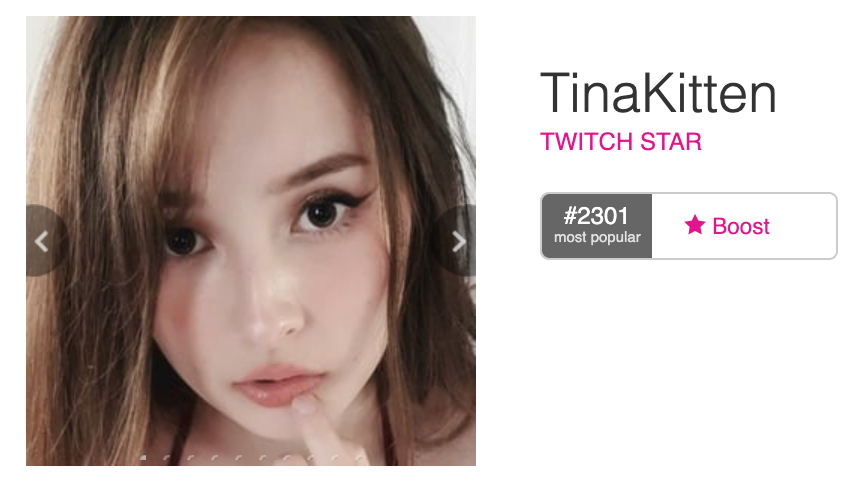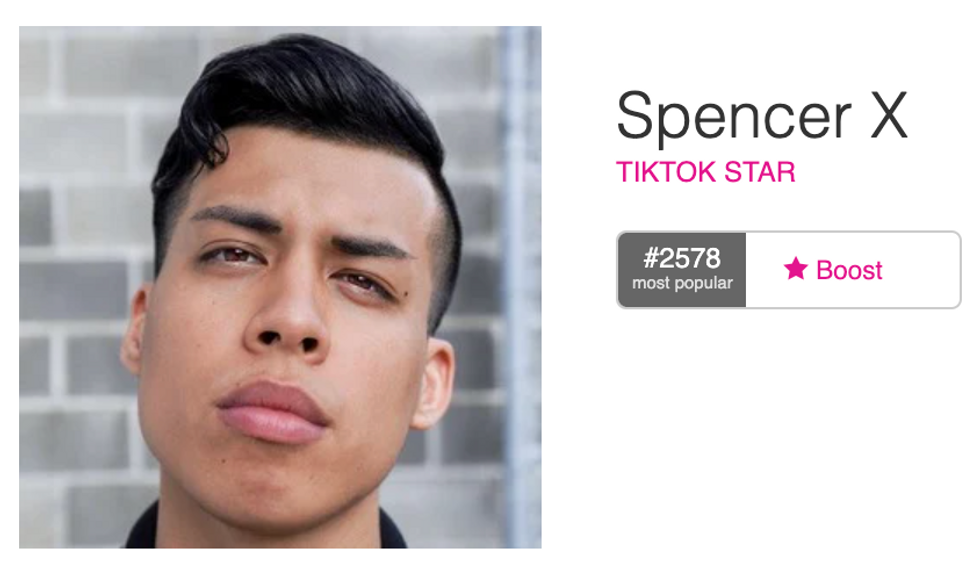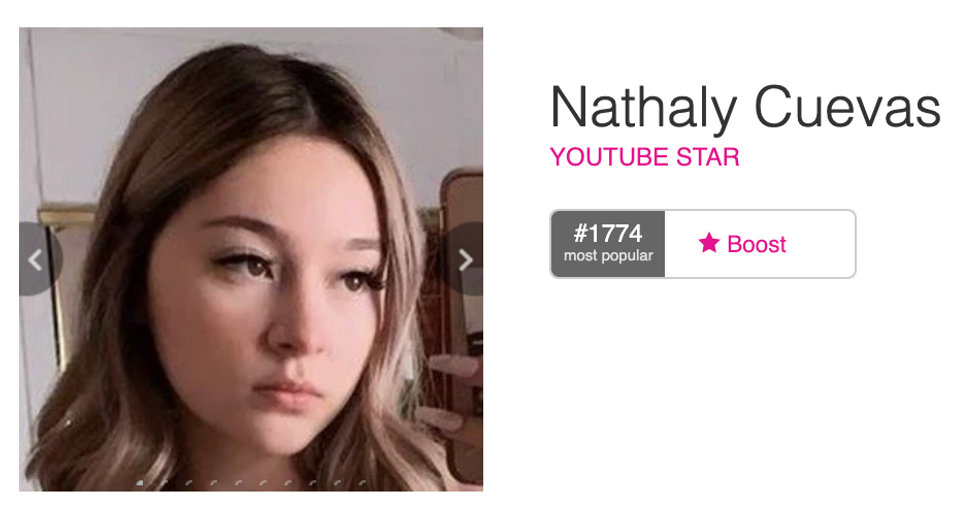Four Things to Watch as the Influencer Economy Ramps Up in 2022

The age of the creator is upon us.
After years of gaining momentum, the creator economy has gone mainstream. Payment processing platform Stripe estimates the number of individuals who now see themselves as full-time “creators”—those who use online tools to sell digital content—grew 48% in 2021, while earnings across the industry are expected to soon eclipse $10 billion.
Major brands have taken notice, as influencers can garner loyal social media followings that outpace those of many Hollywood celebrities. Meanwhile, some top-tier influencers now make more than S&P 500 CEOs. As more Gen Z creators enter the workforce—looking for opportunities beyond traditional models—the industry is poised to grow at a breakneck pace. We talked with Famous Birthdays founder Evan Britton, whose platform tracks and measures the industry, as well as several emerging influencers about what to watch for over the coming year.
1. Gaming Influencers Grow
There is more gaming content now than ever. According to TwitchTracker, which catalogs streamers, 2021 was the most popular year ever for Twitch, which averaged more than 3.1 million daily viewers at its peak in May 2021. January 2022's numbers (2.9 million) are not far behind.
“Twitch streamers have highly engaged fans,” said Britton. He pointed to Twitter as an example of a platform where many brands and personalities find it “hard to get engagement,” yet where many streamers routinely manage to draw “thousands of likes and comments.”
“Their fans are so engaged with them because they’re watching them for hours on end,” he added. “They just want more content.”
Even though demand for gaming content is up, expect gaming creators to become more strategic about repurposing content in 2022.
“As a streamer, one of the biggest things right now is finding ways to continue to grow while being efficient,” said gamer and Twitch streamer Nick Bartels. In the past, influencers in the gaming world would commit many hours to livestreaming their adventures—but when the game was over, traditionally, so was the stream, and few did anything with the resulting content.
Expect to see creators looking for ways to funnel growth into platforms even when they aren’t streaming. Bartels said he’s looking to work with an editor who can repurpose much of the live content he creates.
“One of the bigger concerns is burnout over air time,” said Bartels. “It’s part of the grind initially, but the last thing you’re going to want to do after you stream is edit. You want to have some life balance.”

TinaKitten/ Famous Birthdays
Famous Birthdays' Gaming Influencers to Watch
2. The Blockchain Provides a New Source of Income and Experimentation
In years past, influencers relied largely on advertising dollars to monetize their massive audiences and provide them with an income. More recently, however, the blockchain—including cryptocurrency and NFTs— have stepped in, providing a new way to create community while growing revenue.
“The growth of cryptocurrency followed by the explosion of NFTs was a big trend in 2021 that will continue into 2022,” said Britton. “Last year, creators sold digital art and communities sold limited edition collectables offering unique access and clout. This year, offerings will become even more creative.”
Britton said one driver of this trend is entertainment and engagement. NFTs, or non-fungible tokens, provide a way for influencers to reward their most engaged users, as well as a way for audiences to literally invest in the creators they love. “I think it’s a fun way for people to get involved and be part of a community,” he noted. As creators build engaged communities of their own, NFTs could provide additional methods for them to monetize.
But there has been a dark side to influencers’ interest in crypto. Earlier this month, Kim Kardashian and Floyd Mayweather were among a number of influencers accused of taking part in an online pump-and-dump crypto scam. TikTok has since banned promotional content related to financial services, including cryptocurrency, by adding them to its list of “globally prohibited industries.”
While it remains to be seen just how effective NFTs will be as an investment tool, expect interest in the space to continue to grow.

Spencers/ Famous Birthdays
Famous Birthdays' Influencers with NFT Projects to Watch
3. More Fun with Food
Food has emerged as a growing subset of the influencer economy, and several new platforms launched in 2021 looking to seize on that growing interest. Restaurants large and small have taken notice.
“One huge tailwind on TikTok has been creators offering up their unique recipes and fun takes on food,” said Britton, who expects this trend to build throughout 2022. “TikTok is about fun, short videos. Everybody loves food and a lot of people like making food. It just has a lot of natural product-market fit with TikTok.”
Videos showing food can be instrumental in convincing consumers to try new restaurants or menu items. In a survey by restaurant marketing firm MGH, 36% of TikTok users said they have visited or ordered food from a restaurant after seeing a TikTok video featuring that establishment.
Influencer Cassie Sharp found success in 2021 by creating bite-sized content around food challenges, like her popular “five random ingredients” challenge.
“I’m trying to find new challenges that garner similar engagement, and take short-form videos and turn them into long-form content so that I can take some of those views on my shorts and apply them on my long-form videos,” she said, highlighting a trend common among creators in all verticals: repurposing content.
“The greatest thing about short-form content is you can throw it out there and see what catches,” Sharp added. “If I get an audience for a specific short-form video, when I start making long-form videos people are already comfortable with it.”
Her biggest takeaway so far: Clear bowls are essential for creating engaging food videos. “It’s just more interesting to watch the butter and brown sugar melt together,” she said.

Lisa Nguyen/ Famous Birthdays
Famous Birthdays' Food-Focused Influencers to Watch
4. Social Shopping Upends Ecommerce
The pandemic helped cement ecommerce’s rapidly growing advantage over brick-and-mortar shopping. As more influencers take to livestreaming platforms, expect the nature of online shopping to change.
“Facebook, Instagram and TikTok each facilitate live-shopping and YouTube launched livestreams to promote shopping ahead of the 2021 holiday season,” noted Britton, who added that he expects live-shopping to become increasingly popular in 2022. “It took a while to get here, but it’s growing.”
Gen Z is certainly keen to buy in real time. Survey results from the 2022 Instagram Trend Report show 27% of users aged 13 to 24 shop directly on social media.
Instagram’s native affiliate tool is just one example of this trend in action. The platform began testing the tool in 2021, incentivizing creators to include shoppable content not just in their feeds but also in their Instagram Stories and livestreams.

Nathaly Cuevas/ Famous Birthdays
Famous Birthdays' Ecommerce Influencers to Watch
Correction: An earlier version of this story misspelled Nick Bartels' last name.
- The Creator Economy and Social Commerce Will Boom in 2022 ... ›
- TikTok, Influencer Panic and the Celebrity Economy - dot.LA ›
- The Creative Economy Exploded in 2021. - dot.LA ›
- Heypal Uses Social Media Influencers To Raise Its Profile - dot.LA ›
- Gem - dot.LA ›
- Gem - dot.LA ›
- Richard Tyler 'Ninja' Blevins Moves Beyond Twitch - dot.LA ›
- Kim Kardashian Joins the Tech Investing World - dot.LA ›
- Kim Kardashian’s Crypto Fine Chills Celeb Shills' Spines - dot.LA ›
- Micro-Influencers Have Mastered The Side Hustle - dot.LA ›
- The Shopping Revolution Is Coming to Virtual Reality - dot.LA ›
- Tarte's Sponsored Dubai Influencer Trip Leaves Fan Sour - dot.LA ›




 Image Source: Perelel
Image Source: Perelel
 Image Source: Valar Atomics
Image Source: Valar Atomics Image Source: Waymo
Image Source: Waymo Image Source: Apple
Image Source: Apple